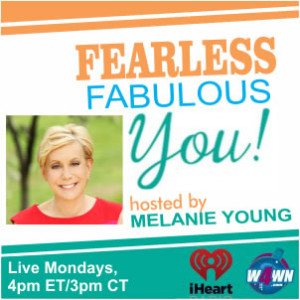When it comes to our bones, there are no lucky breaks. One in two women over the age of 50 and one in 4 men over 50 will break a bone due to osteoporosis. Of the estimated 10 million Americans with osteoporosis, about eight million or 80% are women. Osteoporosis causes an estimated two million broken bones a year. Source: National Osteoporosis Foundation.
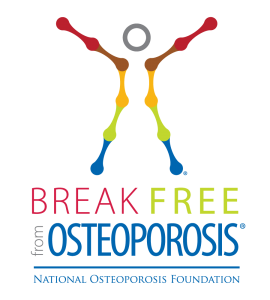
Image courtesy of www.NOF.org
Make no bones about it. We all need to be proactive to protect our bones. May is National Osteoporosis Awareness Month. Here’s what you need to know:
Osteoporosis is caused by loss of bone mass which weakens the bones and can lead to fractures and breaks. Basically our bodies are comprised of flesh, bones, organs and fluids. Our flesh provides our bodies with protective covering; our bones hold us up. Many of us spend more time and money protecting our flesh with sunscreen and anti-aging creams. But how much thought are you giving to protecting your bones?
What are your risks?
You may think osteoporosis is an “older person’s condition.” True, after you undergo menopause your risk does increase due to loss of estrogen. In the five to seven years after menopause, women can lose up to 20 percent or more of their bone density (source: www.NOF.org). Older people tend to be more sedentary which doesn’t help. But younger women can also have osteoporosis as can women taking certain medications. Women who are overweight or who very thin and small framed can be prone to weaker bones.
Our bodies’ most important bone builders are calcium, a mineral, and vitamin D which helps your body absorb calcium. They work together, and you need adequate amounts of both based on your age and gender.
99% of the calcium in our bodies is found in our bones and our teeth. Calcium is not only important for stronger bones; it also is important for helping our blood clot and muscles contract. Our bodies deplete calcium naturally everyday through excretion, but they don’t naturally replenish it. This is why a calcium rich diet is important. Your skin makes Vitamin D naturally through access to sunlight, another important reason to spend time outside. Certain foods contain vitamin D, but sometimes you may need to supplement.
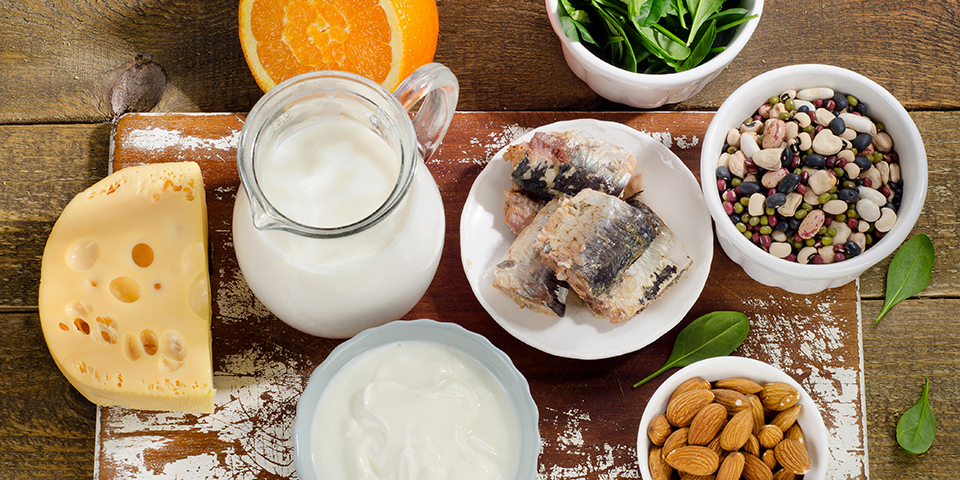
A calcium rich diet is important for healthy bones Photo: www.NOF.org
How to protect your bones:
The earlier you start in life with ahealthy diet and exercise regimen the better for your bones as well as your overallwell-being.
- A diet rich in calcium and vitamin D. We all grew up seeing ads that said, “Milk builds good bones.” Aside from dairy products (e.g., cheese, butter, milk, yogurt ) other calcium rich foods include: fish, unsalted nuts and dark leafy greens. Vitamin D is naturally found in fatty fish like tuna, mackerel, sardines and salmon. Many foods such as milk, yogurt, orange juice and cereals are fortified with vitamin D. But the amounts in the fortified foods vary, so read labels carefully.
- A fitness regimen that combines weight bearing exercises, high or low impact aerobics and stretching. Yoga is great for strengthening and building flexibility but certain poses may not be advisable if you already have weak bones.You need to consult your medical practitioner as well as your yoga/fitness instructor before starting a new regimen,
- Weight management: While diet and exercise are key components to weight control, you have to manage not only what you eat but also how much you eat as well as how much energy you exert when you move if you want to maintain a lower body weight. And you need to manage your stress and sleep which can both impact your metabolism and how your body stores/burns fat.
- Natural sunlight is the easiest way for your body to get a healthy dose of vitamin D. If you live in the North or work indoors you may have less access to sunlight, and we are all wearing more sun protection to reduce our risk for skin cancer. This means we are also losing the benefits of getting vitamin D from the sun. The best solution? Try to get 20-30 minutes of natural outdoor light every day and take advantage of mornings or late afternoons when the sun’s rays are less strong.
- Take supplements only as needed or when your diet is not providing what you need. If you consume calcium rich foods daily you are probably getting sufficient amounts. But getting enough vitamin D can be trickier, and a supplement may be advisable. The amount of supplement you need depends your on age and gender. Most physicians recommend that women have bone density tests starting at age 65 or earlier if you are at risk (e.g., if you have had broken bones or are taking medications that may cause bone weakening). But you may want to take vitamin D supplements at a younger age if you are not getting sufficient amounts through diet and sunlight. Consult with your doctor and nutritionist.
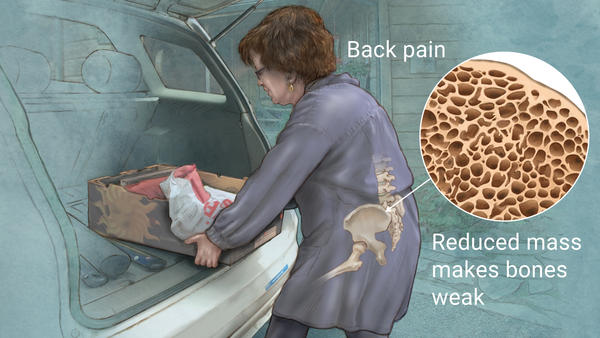
Posture, whether sitting or standing matters. So does how you lift and carry items. Photo:http://www.NOF.org
Fractures and falls are more likely as you age.
As you age two other factors should be considered to protect your bones. Risk for falls and fractures can occur due to weakened eyesight or lack of balance. It’s important to have regular eye exams and have your hearing checked if you feel any type of imbalance. And at any age, lighten up your load. None of us should be carrying heavy bags or boxes.
Having healthy bones allows our bodies the freedom to go where we wish and stay vibrant and active. This past week as I hiked the remoteNa Pali Coast trail in Kauai, climbing rocks both uphill and down through some of the most spectacular scenery of my life. I expressed gratitude for my healthy bones at my age and pledged to be more vigilant about their care. I want to keep on trekking and stand tall. How about you?
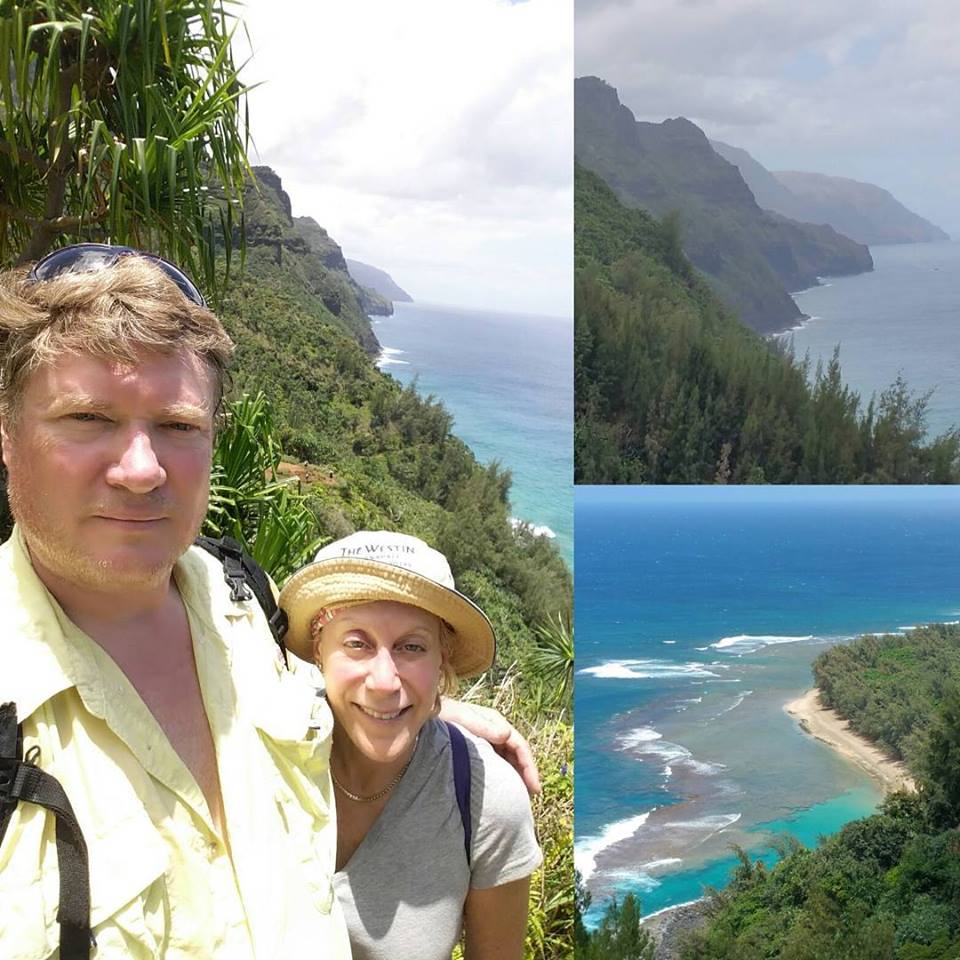
I made it up and back on slippery rocks with no falls thanks to strong bones and knees! I also carried a very small backpack which helped.
For more information on protecting your bones and on osteoporosis visit the National Osteoporosis Foundation www.nof.org. Click here to download a free book with more tips and guidelines.
Tweet: To stand tall and not fall take care of your bones. #fearlessfabulousyou
Listen tomy interview with Columbia University Professor and Osteoporosis Expert Dr. David Dempster on iHeart.com and the free iHeart App. Click this link.
